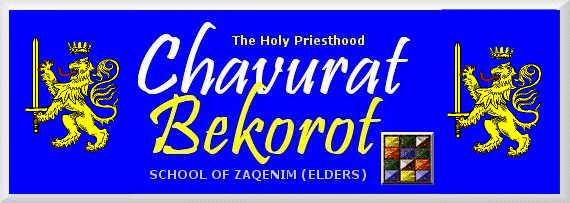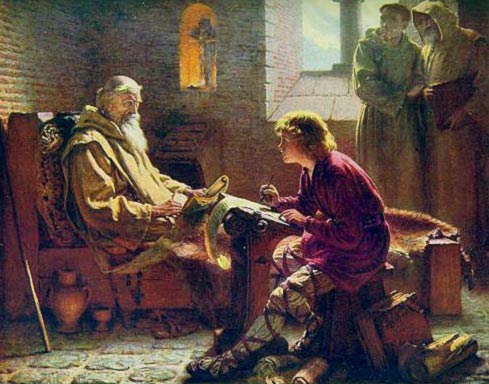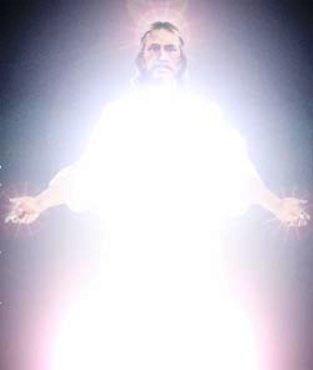
 20
JOHANNINE ESSAYS
20
JOHANNINE ESSAYS
 Light and Love in
Light and Love in
the Johannine Epistles
(19 May 1983)
by Christopher C. Warren, M.A.(Oxon)

Intro | 1 | 2 | 3 | 4 | 5 | 6 | 7 | 8 | 9 | 10 | 11
12 | 13 | 14 | 15 | 16 | 17 | 18 | 19 | 20 | 21
I. Light
The word 'light' is used in connection with joy, blessing, and life in contrast to sorrow, adversity, and death in most of the Bible (see Ge.1:3f; Job 10:22; 18:5f; etc.). At an early time is came to signify Yahweh's presence and favour (Ps.27:1; Is.9:2; 2 Cor.4:6) in contrast to Yahweh's judgement (Amos 5:18). From this and other sources arise an ethical dualism between light and darkness, i.e. good and evil, which is particularly marked in the New Testament and especially in the Johannine epistles. Some scholars have regarded Hellenistic parallels to be significant in this regard, but the presence of this usage in Judaism, e.g. "The War of the Sons of Light and the Sons of Darkness" in the Dead Sea Scrolls (DSS), makes such an influence unnecessary and provides a more pertinent commentary on the New Testament concepts.
Yahweh's holiness is expressed in terms of light. In 1 Jn.1:5 it is said that "Elohim (God) is light" and other passages in the same epistle emphasise the implications of this for the believer. The same thought is seen typically in the Hebrew expression "children of light" which is twice used by Paul and once by John (Jn.12:36; Eph.5:8; 1 Thes.5:5).
When John says, "Elohim (God) is light and there is no darkness whatsoever in Him", he says it deliberately, firmly, and solemnly. But the moral implications are given immediately, for accepting the doctrine entails appropriate conduct, a constant feature of 1 John.
We have mentioned the use of light-darkness dualism in the DSS and in Hellenism but it is worth looking at the latter a little more closely. Philo, the Hellenistic Jew of the first century, looking back to Psalm 27:1 ("Yahweh is my light"), actually duplicates the Johannine passage. "Elohim (God) is light", he wrote, but then, with greater philosophical refinement, in the Platonist manner, he adds, safeguarding the divine transcendence, "and not light only, but the archetype of every other light; or rather, more ancient and higher than any archetype". It was an important element in the agreed basis of thought which was shared by orthodox Christian thinkers and many of the heretics of the second century, and it is hard to believe that any opponents whom our writer is likely to be facing would have found any difficulty in accepting this proposition.

Indeed, this very fact was probably an embarrassment to him, and explains why he is quick to expound it in his own terms. For it could bear out other interpretations, and his own was in some ways not the most clear-cut, and nor was it, in the eyes of many, the most attractive.
The world was in the realm of darkness; by definition it was the very antithesis of Yahweh. Man's only hope lay in finding a way of extracting himself from it - or being extracted by the Saviour from the divine side and attaching Himself to Yahweh. This was the teaching of the DSS but where the Johannine epistles differed was in their demand to do justice to the moral sense. John further says that the darkness is not permanently arraigned against the light, for it already is passing away (1 Jn.2:8). Once more, John shares the Hebrew perspective according to which Yahweh will act to vindicate His cosmic rule; and, beyond that, he shares the Christian perspective whereby that action has begun in the coming of the Messiah (Christ), "the true light (who) is already shining".
One interesting facet of the epistles is that the light concerns Yahweh and not the Messiah (Christ). In the gospel Yah'shua (Jesus) refers to Himself as the "light of the world". Though the Messiah (Christ) is seen as vital in the First Epistle as in any early Christian writing, doctrinal statement concerning Him is much less developed than in the gospel.
Thus we find John writing as one who knew Yah'shua (Jesus), the life-giving Word of Elohim (God) personally. He knew that Yah'shua (Jesus) was both Son of Elohim (God) and real man: no apparition but a person you could see and touch. When John used 'light' to describe the Messiah (Christ) and Elohim (God), he means not just the blinding radiance of His presence, but truth, purity, and moral perfection. No-one who has access to Him can live "in the dark" - dealing in sin, evil and lies, qualities opposed to His very nature. This is not to say that believers are automatically perfect. The searchlight of Elohim's (God's) presence shows us up. Friendship with Him involves seeing ourselves as we really are, constantly seeking His forgiveness, and reforming, until we are perfect as human beings, as He is in His own divine sphere (Mt.5:48; 19:21; Jn.17:23; 1 Jn.4:18).
II. Love
John sums up in the epistles the Christian lifestyle in one word: love. The command to love one another rolls up into one all Yahweh's instructions about human relationships. But Christian love - Yah'shua's (Jesus') love - is more than just words or feelings. It will inevitably touch our pocket and possessions and it may cost us life itself. We can measure the reality of our love for Yahweh by our determination to do as He says and love our fellow man. If our conscience is clear on this score, we can be confident that Yahweh will answer our prayers.
There is one basic test by which to judge any teacher - his recognition that Yah'shua the Messiah (Jesus Christ) has come in the flesh, which John emphasises in the First Epistle (because this was the particularly heresy of the day), and that Yah'shua (Jesus) was Elohim (God). Elohim (God) is defined as love (1 Jn.4:8,16). In the death of Yah'shua (Jesus) for human sin He has shown us what love is. And if we really share in His life - His nature - that love must flow through us to all around. The First Epistle says that genuine love for Elohim (God) is bound to show itself in actions towards others. This is John's favourite theme. But love is not trite or sentimental, nor inconsistent with plain speaking (1 Jn.4:20). Love and obedience are bound up together (1 Jn.4:21). If we love and obey Yahweh we need not dread the day of judgement (1 Jn.4:17-18).
This love (Heb. chesed, Gk. agapé) is the only love that will defeat the antichrist forces of the world we live in. The Second Epistle follows after the pattern of the First, exhorting believers to love one another (2 Jn.5 cp. Jn.15:12-17). To love others as Yah'shua (Jesus) loves us means keeping all Yahweh's commandments (2 Jn.6 cp. 1 Jn.2:3-4; 3:22,24; 5:2-3). 'Love' which breaks any of the basic rules Yahweh has set to govern human relationships is not love at all. The love of Yah'shua (Jesus) is self-giving, not self-seeking. For the Christian, love and truth go hand in hand (2 Jn.1,3 cp. 1 Jn.3:18; 3 Jn.1). But he should content himself with what Yah'shua (Jesus) has taught as only false teachers are compelled to eliminate or elaborate (2 Jn.9-10).
The Third Epistle is a perfect example of true love not in action. Diotrephes is damaging John's character, suppressing his letter, spreading lies, hugging his own position as leader and hindering missionary outreach. He was a petty dictator who considered himself indispensable, a sharp contrast with another character called Demetrius. Thus Diotrephes represents the false 'love' that opposed the true lovers of Yah'shua (Jesus), the cohesive moral force of the common life of the Messianic Community (Church).
Intro | 1 | 2 | 3 | 4 | 5 | 6 | 7 | 8 | 9 | 10 | 11
12 | 13 | 14 | 15 | 16 | 17 | 18 | 19 | 20 | 21


This page was created on 1 March 2004
Updated on 1 March 2004
Copyright © 1987-2008 NCCG - All Rights Reserved



